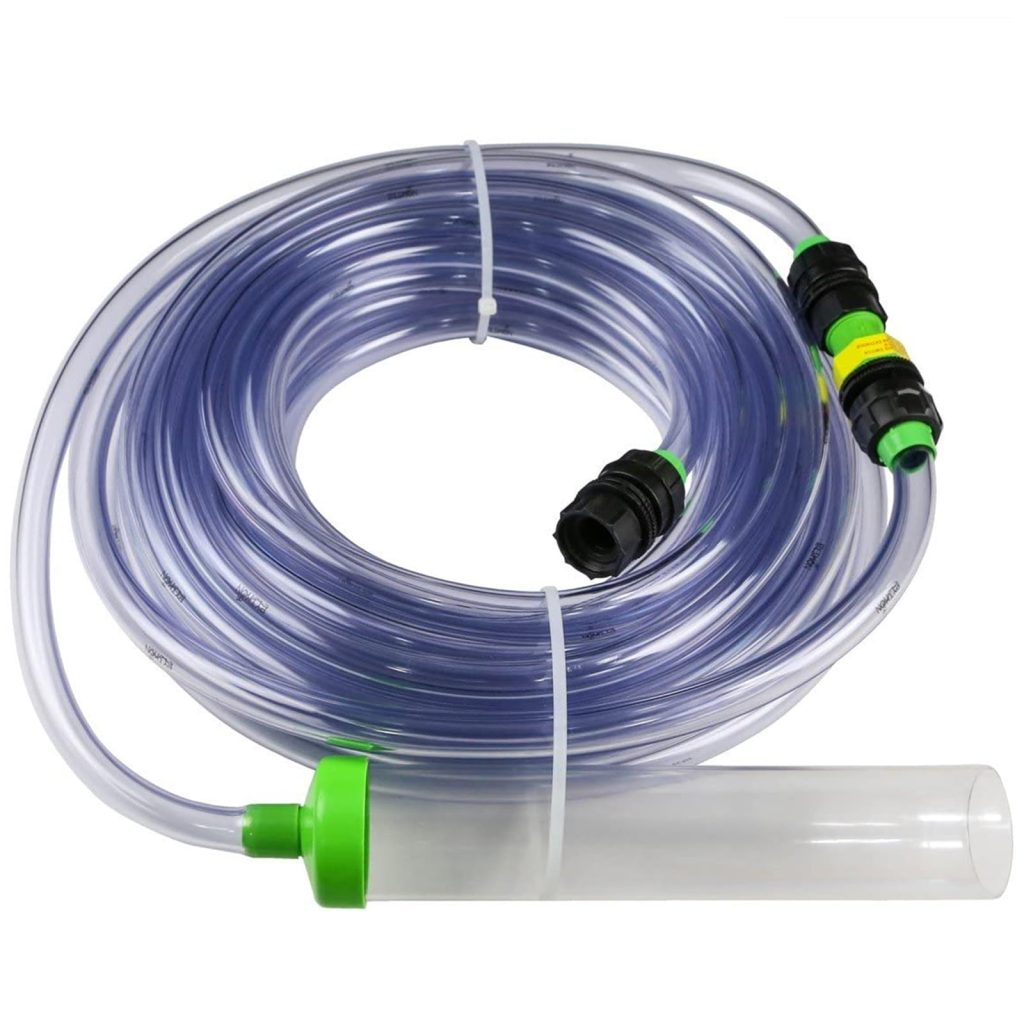
Keras model compilation is an important step in preparing a neural network for training. It involves configuring essential components that define how the model will be trained and evaluated. The compile() method in Keras is used to specify these components, which include the optimizer, loss function, and metrics.
Here’s a basic example of how to compile a Keras model:
from tensorflow import keras
model = keras.Sequential([
keras.layers.Dense(64, activation='relu', input_shape=(10,)),
keras.layers.Dense(32, activation='relu'),
keras.layers.Dense(1, activation='sigmoid')
])
model.compile(optimizer='adam', loss='binary_crossentropy', metrics=['accuracy'])
In this example, we create a simple sequential model and then compile it using the compile() method. Let’s break down the key components:
- The algorithm used to update the model’s weights during training. In this case, we’re using ‘adam’.
- The objective that the model will try to minimize during training. Here, we’re using ‘binary_crossentropy’ for binary classification tasks.
- Additional performance measures that will be evaluated during training and testing. We’ve specified ‘accuracy’ as our metric.
It’s important to note that the choice of optimizer, loss function, and metrics should align with your specific problem and dataset. For example, if you’re working on a multi-class classification problem, you might use ‘categorical_crossentropy’ as the loss function instead.
You can also use more advanced configurations by passing instances of optimizer, loss, and metric classes:
from tensorflow.keras.optimizers import Adam
from tensorflow.keras.losses import BinaryCrossentropy
from tensorflow.keras.metrics import Accuracy, Precision, Recall
model.compile(
optimizer=Adam(learning_rate=0.001),
loss=BinaryCrossentropy(),
metrics=[Accuracy(), Precision(), Recall()]
)
This approach allows for more fine-grained control over the compilation process, such as setting specific parameters for the optimizer or using custom loss functions and metrics.
After compilation, the model is ready for training using the fit() method, where you’ll provide your training data and specify training parameters such as the number of epochs and batch size.
Specifying Loss Functions in Keras Models
Specifying the appropriate loss function very important for effective model training in Keras. The loss function quantifies the difference between the predicted outputs and the actual target values, guiding the model to improve its performance during training. Keras offers a variety of built-in loss functions, and you can also create custom loss functions to suit your specific needs.
Common Built-in Loss Functions:
- Used for binary classification problems
- Used for multi-class classification problems
- Used for regression problems
- Another option for regression problems
- Used for multi-class classification when labels are integers
Here’s an example of how to specify different loss functions when compiling a Keras model:
from tensorflow import keras
model = keras.Sequential([
keras.layers.Dense(64, activation='relu', input_shape=(10,)),
keras.layers.Dense(32, activation='relu'),
keras.layers.Dense(1) # Output layer
])
# For binary classification
model.compile(optimizer='adam', loss='binary_crossentropy', metrics=['accuracy'])
# For multi-class classification
model.compile(optimizer='adam', loss='categorical_crossentropy', metrics=['accuracy'])
# For regression
model.compile(optimizer='adam', loss='mean_squared_error', metrics=['mae'])
You can also use the loss function classes directly from the keras.losses module for more flexibility:
from tensorflow.keras.losses import BinaryCrossentropy, CategoricalCrossentropy, MeanSquaredError # Binary classification model.compile(optimizer='adam', loss=BinaryCrossentropy(), metrics=['accuracy']) # Multi-class classification model.compile(optimizer='adam', loss=CategoricalCrossentropy(), metrics=['accuracy']) # Regression model.compile(optimizer='adam', loss=MeanSquaredError(), metrics=['mae'])
Custom Loss Functions:
Sometimes, you may need to create a custom loss function to address specific requirements of your problem. You can define a custom loss function as a Python function or a subclass of keras.losses.Loss. Here’s an example of a custom loss function:
import tensorflow as tf
from tensorflow import keras
def custom_loss(y_true, y_pred):
squared_difference = tf.square(y_true - y_pred)
return tf.reduce_mean(squared_difference, axis=-1)
model.compile(optimizer='adam', loss=custom_loss, metrics=['mae'])
For more complex scenarios, you can create a custom loss function by subclassing keras.losses.Loss:
class CustomLoss(keras.losses.Loss):
def __init__(self, regularization_factor=0.1, name="custom_loss"):
super().__init__(name=name)
self.regularization_factor = regularization_factor
def call(self, y_true, y_pred):
squared_difference = tf.square(y_true - y_pred)
return tf.reduce_mean(squared_difference, axis=-1) + self.regularization_factor * tf.reduce_mean(tf.square(y_pred), axis=-1)
model.compile(optimizer='adam', loss=CustomLoss(regularization_factor=0.01), metrics=['mae'])
When choosing a loss function, think the nature of your problem (classification or regression), the distribution of your target values, and any specific requirements of your task. Experimenting with different loss functions can often lead to improvements in model performance.
Choosing Optimizers for Model Training
Choosing the right optimizer especially important for effective model training in Keras. Optimizers are algorithms that adjust the model’s weights to minimize the loss function. Keras provides several built-in optimizers, each with its own characteristics and hyperparameters. Let’s explore some common optimizers and how to use them in your Keras models.
1. Stochastic Gradient Descent (SGD)
SGD is a simple yet effective optimizer. It updates the weights in the direction of the negative gradient of the loss function.
from tensorflow.keras.optimizers import SGD sgd = SGD(learning_rate=0.01, momentum=0.9) model.compile(optimizer=sgd, loss='mse', metrics=['mae'])
2. Adam (Adaptive Moment Estimation)
Adam is an adaptive learning rate optimization algorithm that is well-suited for a wide range of problems. It combines ideas from RMSprop and momentum optimization.
from tensorflow.keras.optimizers import Adam adam = Adam(learning_rate=0.001, beta_1=0.9, beta_2=0.999) model.compile(optimizer=adam, loss='binary_crossentropy', metrics=['accuracy'])
3. RMSprop
RMSprop is an adaptive learning rate method that attempts to address some of the shortcomings of AdaGrad.
from tensorflow.keras.optimizers import RMSprop rmsprop = RMSprop(learning_rate=0.001, rho=0.9) model.compile(optimizer=rmsprop, loss='categorical_crossentropy', metrics=['accuracy'])
4. Adagrad
Adagrad adapts the learning rate to the parameters, performing larger updates for infrequent parameters and smaller updates for frequent ones.
from tensorflow.keras.optimizers import Adagrad adagrad = Adagrad(learning_rate=0.01) model.compile(optimizer=adagrad, loss='mse', metrics=['mae'])
5. Adadelta
Adadelta is an extension of Adagrad that seeks to reduce its aggressive, monotonically decreasing learning rate.
from tensorflow.keras.optimizers import Adadelta adadelta = Adadelta(learning_rate=1.0, rho=0.95) model.compile(optimizer=adadelta, loss='categorical_crossentropy', metrics=['accuracy'])
Custom Learning Rate Schedules
You can also create custom learning rate schedules to adjust the learning rate during training:
from tensorflow.keras.optimizers.schedules import ExponentialDecay
initial_learning_rate = 0.1
lr_schedule = ExponentialDecay(
initial_learning_rate,
decay_steps=10000,
decay_rate=0.96,
staircase=True)
optimizer = Adam(learning_rate=lr_schedule)
model.compile(optimizer=optimizer, loss='sparse_categorical_crossentropy', metrics=['accuracy'])
Choosing the Right Optimizer
The choice of optimizer can significantly impact your model’s performance. Here are some general guidelines:
- For most problems, Adam is a good default choice due to its adaptive learning rate and momentum.
- SGD with momentum can sometimes outperform adaptive methods for image classification tasks.
- RMSprop is often the preferred choice for recurrent neural networks.
- Experiment with different optimizers and their hyperparameters to find the best fit for your specific problem.
Remember to monitor your model’s performance during training and adjust the optimizer or its parameters if necessary. The learning rate is often the most important hyperparameter to tune, regardless of the chosen optimizer.
Customizing Metrics for Model Evaluation
Customizing metrics for model evaluation is an essential part of the model compilation process in Keras. Metrics provide valuable insights into how well your model is performing during training and evaluation. Keras offers a variety of built-in metrics, and you can also create custom metrics to suit your specific needs.
Built-in Metrics:
Keras provides several commonly used metrics out of the box. Here are some examples:
- Measures the percentage of correct predictions
- Measures the proportion of true positive predictions
- Measures the proportion of actual positives that were correctly identified
- Measures the area under the ROC curve
- Measures the average squared difference between predictions and true values
- Measures the average absolute difference between predictions and true values
You can specify these metrics when compiling your model:
from tensorflow import keras
model = keras.Sequential([
keras.layers.Dense(64, activation='relu', input_shape=(10,)),
keras.layers.Dense(1, activation='sigmoid')
])
model.compile(
optimizer='adam',
loss='binary_crossentropy',
metrics=['accuracy', 'precision', 'recall', 'AUC']
)
For more control, you can use the metric classes directly:
from tensorflow.keras.metrics import Accuracy, Precision, Recall, AUC
model.compile(
optimizer='adam',
loss='binary_crossentropy',
metrics=[
Accuracy(),
Precision(),
Recall(),
AUC()
]
)
Custom Metrics:
You can create custom metrics by subclassing keras.metrics.Metric. This is useful when you need to track a specific performance measure this is not available in the built-in metrics. Here’s an example of a custom F1 Score metric:
import tensorflow as tf
from tensorflow import keras
class F1Score(keras.metrics.Metric):
def __init__(self, name='f1_score', **kwargs):
super().__init__(name=name, **kwargs)
self.precision = keras.metrics.Precision()
self.recall = keras.metrics.Recall()
def update_state(self, y_true, y_pred, sample_weight=None):
self.precision.update_state(y_true, y_pred, sample_weight)
self.recall.update_state(y_true, y_pred, sample_weight)
def result(self):
p = self.precision.result()
r = self.recall.result()
return 2 * ((p * r) / (p + r + keras.backend.epsilon()))
def reset_states(self):
self.precision.reset_states()
self.recall.reset_states()
# Use the custom metric in model compilation
model.compile(
optimizer='adam',
loss='binary_crossentropy',
metrics=['accuracy', F1Score()]
)
Thresholded Metrics:
For binary classification problems, you might want to evaluate your model’s performance at different decision thresholds. Keras provides thresholded versions of some metrics:
from tensorflow.keras.metrics import BinaryAccuracy, Precision, Recall
model.compile(
optimizer='adam',
loss='binary_crossentropy',
metrics=[
BinaryAccuracy(threshold=0.7),
Precision(thresholds=0.7),
Recall(thresholds=0.7)
]
)
Multiple Outputs:
If your model has multiple outputs, you can specify different metrics for each output:
model = keras.Model(inputs=input_layer, outputs=[output1, output2])
model.compile(
optimizer='adam',
loss=['binary_crossentropy', 'mse'],
loss_weights=[1.0, 0.5],
metrics={
'output1': ['accuracy', 'AUC'],
'output2': ['mae', 'mse']
}
)
By customizing metrics, you can gain deeper insights into your model’s performance and tailor the evaluation process to your specific needs. Remember to choose metrics that are relevant to your problem and align with your project’s goals.
Compiling and Fitting the Keras Model
After specifying the optimizer, loss function, and metrics, the final step is to compile the model and fit it to your data. Here’s how you can do this in Keras:
from tensorflow import keras
import numpy as np
# Create a simple model
model = keras.Sequential([
keras.layers.Dense(64, activation='relu', input_shape=(10,)),
keras.layers.Dense(32, activation='relu'),
keras.layers.Dense(1, activation='sigmoid')
])
# Compile the model
model.compile(optimizer='adam', loss='binary_crossentropy', metrics=['accuracy'])
# Generate some dummy data
X_train = np.random.random((1000, 10))
y_train = np.random.randint(2, size=(1000, 1))
X_val = np.random.random((200, 10))
y_val = np.random.randint(2, size=(200, 1))
# Fit the model
history = model.fit(
X_train, y_train,
epochs=10,
batch_size=32,
validation_data=(X_val, y_val),
verbose=1
)
Let’s break down the key components of this process:
- This method configures the model for training. We specify the optimizer, loss function, and metrics here.
- This method trains the model for a fixed number of epochs (iterations on a dataset).
The fit() method accepts several important parameters:
- Your training data and labels.
- The number of times to iterate over the entire dataset.
- The number of samples per gradient update.
- A tuple of inputs and labels to use for validation.
- Verbosity mode (0 = silent, 1 = progress bar, 2 = one line per epoch).
The fit() method returns a History object, which contains a record of training loss values and metrics values at successive epochs, as well as validation loss values and validation metrics values (if applicable).
You can access this training history to visualize the model’s performance over time:
import matplotlib.pyplot as plt
plt.plot(history.history['accuracy'], label='accuracy')
plt.plot(history.history['val_accuracy'], label='val_accuracy')
plt.xlabel('Epoch')
plt.ylabel('Accuracy')
plt.legend()
plt.show()
After training, you can evaluate your model on test data:
X_test = np.random.random((1000, 10))
y_test = np.random.randint(2, size=(1000, 1))
test_loss, test_acc = model.evaluate(X_test, y_test, verbose=2)
print(f'nTest accuracy: {test_acc}')
You can also make predictions on new data:
predictions = model.predict(X_test)
Remember that the compilation and fitting process may need to be adjusted based on your specific problem, dataset, and model architecture. It is often an iterative process where you experiment with different hyperparameters, model architectures, and training strategies to achieve the best performance.






